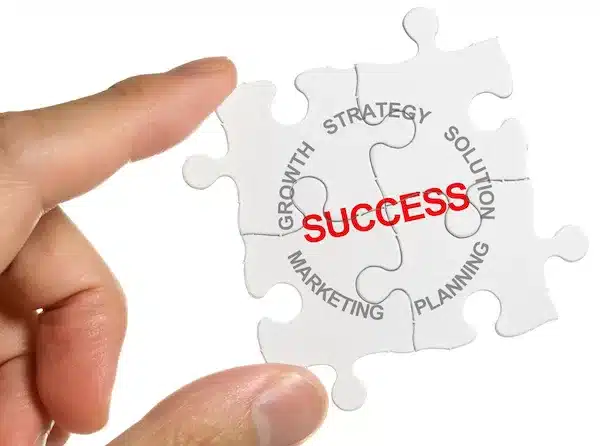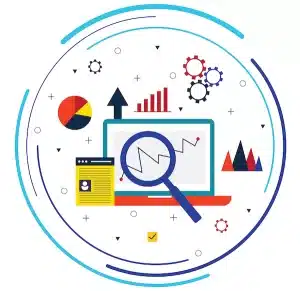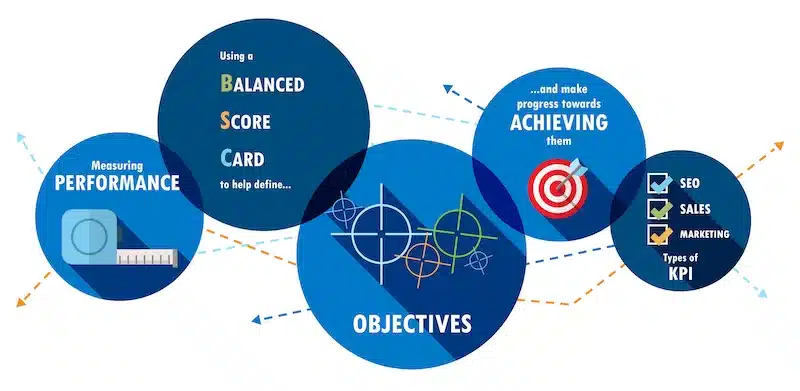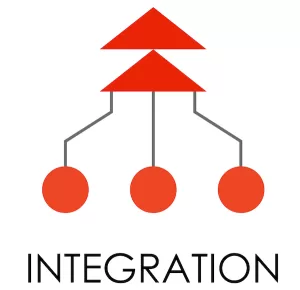 Growth marketing strategy is an approach to digital marketing that emphasizes experimentation, data analysis and refinement for rapid, sustainable growth.
Growth marketing strategy is an approach to digital marketing that emphasizes experimentation, data analysis and refinement for rapid, sustainable growth.
What more, is it works to optimize every aspect of the customer journey, from the first point of contact to post-purchase engagement.
Through leveraging different tactics, specialists drive user acquisition, retention, and revenue lowering cost per acquisition (CPA) and increasing customer lifetime value (CLV).
In today’s highly competitive and rapidly changing digital landscape growth marketing strategy is a must. This is especially important for businesses wanting to achieve long-term success and maximize return on investment (ROI) from marketing efforts.
Why it’s never too early or too late to implement growth marketing

Implementing a growth marketing strategy into your marketing efforts is important at any stage of your business. Whether you are a startup, a small business, or an established company.
Its the only method where a business can drive sustainable and scalable growth. This is something that is always relevant regardless of the size or stage of your business.
In fact, it can be especially important for startups and small businesses who may have limited resources. Most businesses in this stage need to get the most out of every marketing dollar as possible.
Because growth marketing only focuses on channels and tactics that drive the most growth, marketing budgets can go further. On top of that, businesses can avoid wasting time and resources on what doesn’t work.
For established companies, it can also help to scale growth, stay competitive, enter new markets, expand product lines. It also provides strong continued growth for the long-term.
Regardless of what stage you’re at, implementing a growth marketing strategy is one of the best decisions you’ll make for your business. By focusing on sustainable and scalable growth, you can expand reach, increase revenue and build a strong brand.
Breaking down growth marketing strategy: Understanding the key components

For a business to develop an effective strategy, a deep understanding of its customers is needed, in fact, it’s essential.
Getting to know your customers requires researching your target audience and gathering data on demographics, psychographics and buying behavior. This data can then be used to create customer personas.
Customer personas enable companies to create a detailed fictional representation of their ideal customer. They are created based on market research, customer data, and insights gathered from interactions. In addition, surveys, focus groups, and social media listening tools can be used to gather information about target audiences.
Personas inform marketing strategy to develop campaigns that speak directly to the needs and pain points of each persona. To add to this, marketing campaigns will use the language and messaging each persona is most likely to respond to.
When utilizing personas to inform growth marketing strategy, campaigns can be crafted that resonate best with the target audience. Personas are continually updated based on new data and feedback, this ensures that they remain accurate and relevant.
The importance of data analysis: Making informed decisions to drive business growth
The importance of data analysis in driving sustainable growth cannot be stressed enough. Data from sources like website analytics, customer feedback, social media, and sales is key to an effective growth marketing strategy.
Data analysis allows you to:
- Gain insights into customer behavior, preferences, and challenges, helping to identify areas of improvement in marketing campaigns
- Identify what’s working and what’s not through the analysis of key performance indicators (KPIs) and other metrics.
- Make informed decisions about marketing strategy based on data insights, optimizing campaigns for better performance, improving customer acquisition, and driving revenue growth.
Advanced analytics tools such as predictive analytics and machine learning can also provide deeper insights into customers’ behavior and preferences. Furthermore these tools can help predict future trends, identify opportunities for growth, and optimize marketing campaigns for better performance.
Setting goals and metrics for
business growth success

For a business to see sustainable growth through their marketing efforts, specific goals and metrics need to be set. Defining growth goals keeps focus on what the business wants to achieve while metrics help to track progress and adjust along the way.
Its important to remember, when defining goals, businesses need to consider what they want to achieve with growth marketing strategy. Is it to increase revenue, improve customer retention, expand their customer base, etc.?
Once growth goals have been defined, KPI’s need to be identified that will help measure success. KPIs are specific metrics that track progress towards goals. For example, if the goal is to increase revenue, KPIs might include metrics such as sales growth, customer lifetime value, and average order value.
Setting metrics for measuring success is critical to tracking progress. subsequently, these metrics should be specific, measurable, and aligned with business goals. Benchmarks will also need to be established for each metric to track performance over time.
Thinking outside the box:
Growth marketing ideation & brainstorming
 Once goals have been established, growth marketing strategy specialists will begin the ideation process to generate ideas and strategies that will help achieve those goals.
Once goals have been established, growth marketing strategy specialists will begin the ideation process to generate ideas and strategies that will help achieve those goals.
Ideas are evaluated based on potential impact on the chosen metrics and the resources required to implement them.
It’s a crucial process that involves generating new ideas, strategies, and campaigns that can help businesses achieve their growth goals. This creative process requires innovation, insight, and an understanding of the target audience.
In ideation, growth specialists work to identify potential opportunities and areas for growth, brainstorm new strategies and tactics, as well as develop campaigns that resonate with their target audience.
This involves analyzing data and market trends, conducting customer research, and can also include gathering insights from industry experts and thought leaders.
Once ideas have been generated, they are prioritized based on potential impact, feasibility, and resources required. Then, growth specialists will develop detailed plans for implementing these ideas and also closely monitor their progress and impact.
This is an ongoing process that requires a combination of creativity and data-driven decision-making. It is essential to always be exploring new opportunities and experimenting with new ideas to stay ahead of the competition and drive sustainable growth for the business.
The power of experimentation in
growth marketing strategy
 Once the most promising ideas have been identified, the next step is the experimentation phase, where ideas are tested to see which have the biggest impact on key metrics.
Once the most promising ideas have been identified, the next step is the experimentation phase, where ideas are tested to see which have the biggest impact on key metrics.
This is typically done through various forms of controlled testing, which allow marketers to measure the impact of specific changes or strategies on metrics such as website traffic, conversion rates, and revenue.
Experimentation is critical because it allows growth specialists to test ideas in a controlled environment and gather data on effectiveness. By testing different approaches and analyzing the results, informed decisions can be made about where to focus efforts and which strategies are most effective for achieving set growth goals.
Ideation and experimentation are closely linked in growth marketing. Ideation generates the initial set of ideas, while experimentation tests and refines those ideas based on data and insights. Together, these processes help to develop effective growth marketing strategies and drive sustainable success for businesses.
Growth marketing integration
 Once experiments are completed, the results are analyzed to identify the winning tactics that are most likely to drive growth. The winning tactics are then integrated into the broader marketing plan to ensure they are executed consistently and effectively.
Once experiments are completed, the results are analyzed to identify the winning tactics that are most likely to drive growth. The winning tactics are then integrated into the broader marketing plan to ensure they are executed consistently and effectively.
This may involve revising the existing marketing plan, creating a new plan altogether or implementing winning tactics across multiple channels and touchpoints, such as social media, email marketing, content marketing, or paid advertising.
As winning tactics are identified they may be automated to streamline implementation and reduce the resources required to execute them. Automation can also help to ensure that successful tactics are implemented consistently and accurately across multiple channels and touchpoints.
In addition to automation, the integration phase may also involve scaling the successful tactics to reach a wider audience. This may involve increasing the budgets, new marketing channels, campaigns, or even adding more team members. By scaling successful tactics, growth marketing specialists can generate even more results and drive sustainable growth over the long term.
Leveraging data analysis to optimize
growth marketing strategy
As previously mentioned, data analysis is a critical component of a successful growth marketing strategy. By analyzing data, insights are gained into how campaigns are performing, identifying areas for improvement, and making data-driven decisions to optimize strategy.
Google Analytics is a popular tool for tracking website performance. Social media platforms offer their own analytics tools, and/or you can use social analytic platforms.
There are many data and analysis tools used by growth specialists, including but not limited to:
- A/B testing tools: These tools allow you to test different variations of your campaigns to see which performs better. Popular A/B testing tools include Optimizely and VWO.
- Heatmapping tools: These tools provide visual representations of how users interact with your website or app. By analyzing heatmaps, you can identify areas of your site that are underperforming or need improvement. Popular heat-mapping tools include Crazy Egg and Hotjar.
- Customer feedback tools: These tools allow you to gather feedback from your customers to inform your strategy. Popular customer feedback tools include SurveyMonkey and Typeform.
Data is analyzed regularly to identify areas for improvement. Patterns and trends in data can help optimize campaigns.
For example, if certain types of content perform better than others, you can adjust your content strategy accordingly. Remember to test and iterate on your campaigns based on your data analysis.
Identifying your KPIs, tracking your performance, analyzing your data regularly, and using the right tools to optimize your campaigns, can help make better data-driven decisions that drive sustainable growth for your business.
Here’s a quick recap of this post

Developing an effective growth marketing strategy takes time, effort, and a lot of trial and error. It requires a deep understanding of your target audience, a clear value proposition, a focus on customer acquisition and retention, and a willingness to constantly test and iterate on your campaigns.
To develop a successful growth marketing strategy, start by setting clear business goals and identifying your target audience. Conduct market research to understand your audience’s needs, pain points, and preferences. Craft a value proposition that speaks directly to their needs and highlights the unique benefits of your product or service.
Once you have a clear value proposition, focus on customer acquisition and retention. Use a mix of channels to reach your target audience, including social media, email marketing, content marketing, SEO and paid advertising.
Test different campaigns and channels to see what works best for your business, and optimize your campaigns based on your data analysis.
Remember that data analysis is key to a successful growth marketing strategy. Analyze your data regularly to identify areas for improvement and use the right tools to optimize your campaigns.
Through constant testing and iterating on your campaigns, you can improve your performance over time and drive sustainable growth for your business.
Start experiencing rapid sustainable growth for your business.
Schedule a call with a KPIRY growth marketing consultant today!
